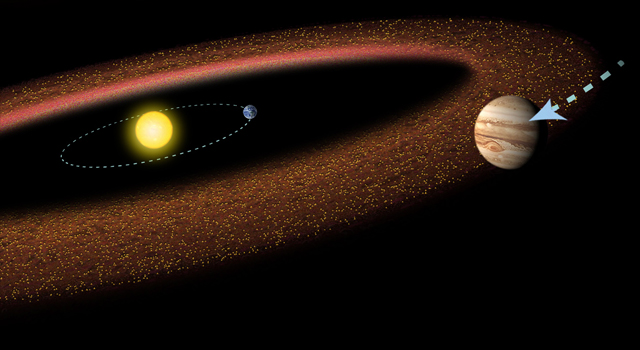When the Sun expands, it will trash all the asteroids

Despite its distance from the Sun, the asteroid belt will disintegrate as it expands. (credit: NASA/ESA/STScI)
We tend to view the bodies of the Solar System as creations of gravity, which pulled their parts together and holds them in place as they orbit. But as we saw with ideas about the formation of Arrokoth, there are lots of situations where gravity is essentially a constant for long periods of time. And given enough of that time, relatively small forces like friction from sparse gas clouds or pressure from the light of the Sun can add up and create dramatic changes. In fact, a remarkable number of these potential influences have been identified and simulated.
One of these has been named the YORP effect, for its developers, Yarkovsky, O'Keefe, Radzievskii, and Paddack. It describes how light can alter the rotational properties of orbiting bodies. In a recent edition of the Monthly Notices of the Royal Astronomical Society, Dimitri Veras and Daniel Scheeres decided to calculate what happens as the Sun ages, the intensity of its light increases dramatically, and the entire asteroid belt gets YORPed.
A (perhaps too) bright futureIt's pretty widely understood that, as the Sun ages, it will expand until its outer edges come close to the Earth's orbit. What's less widely recognized is that it will get quite a lot brighter than it is at present. Other stars with masses similar to the Sun can get thousands of times brighter than the Sun in the last stages of their fusion-driven lives, allowing effects that might otherwise be a bit weak to become dominant.
Read 9 remaining paragraphs | Comments